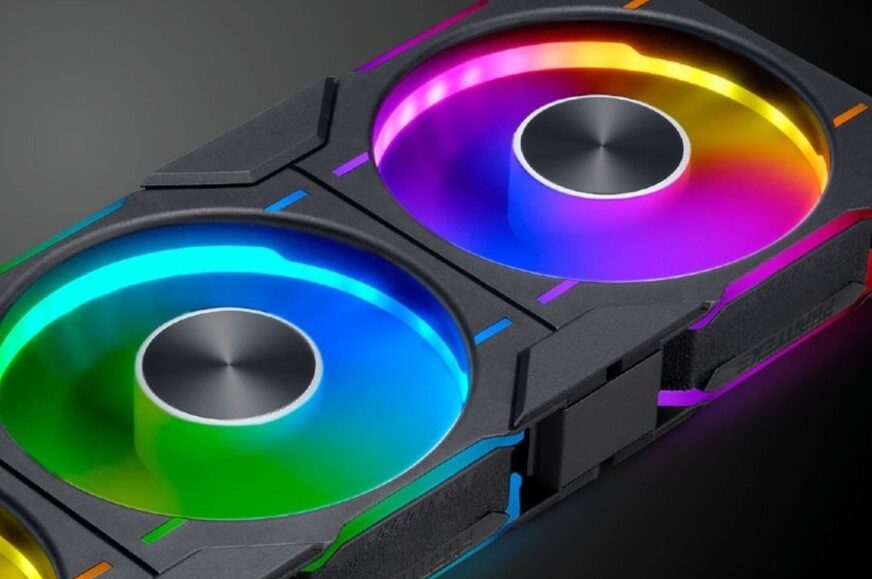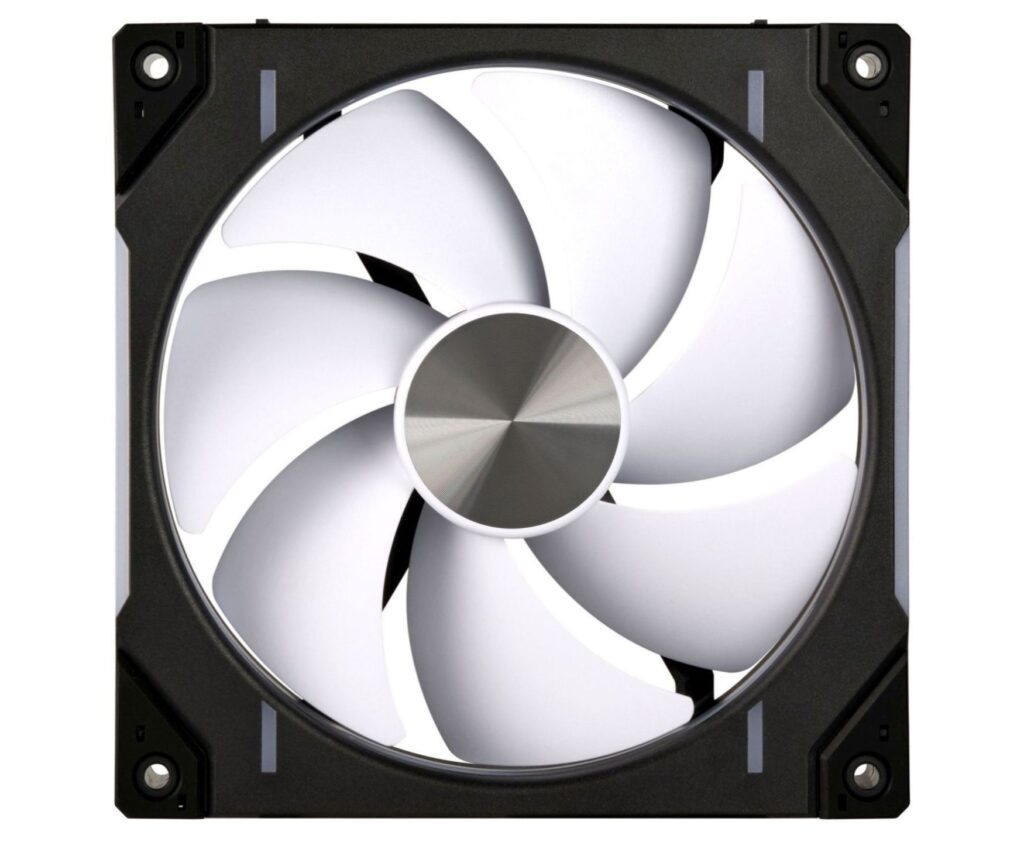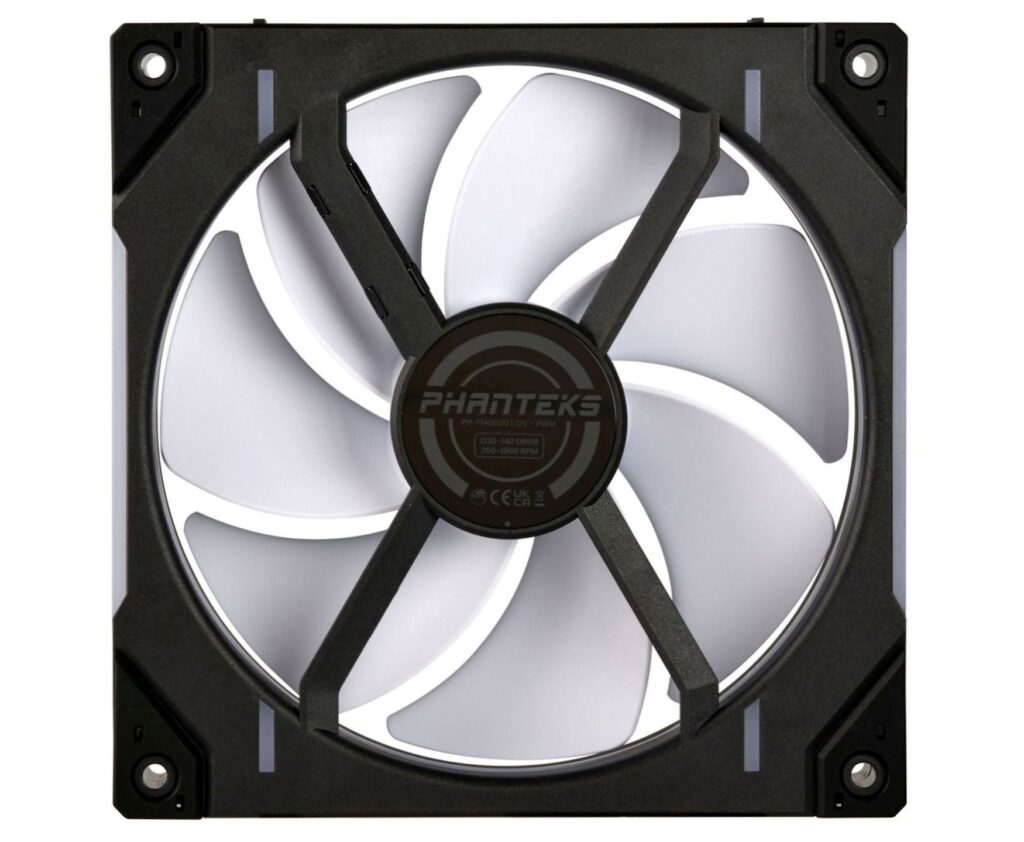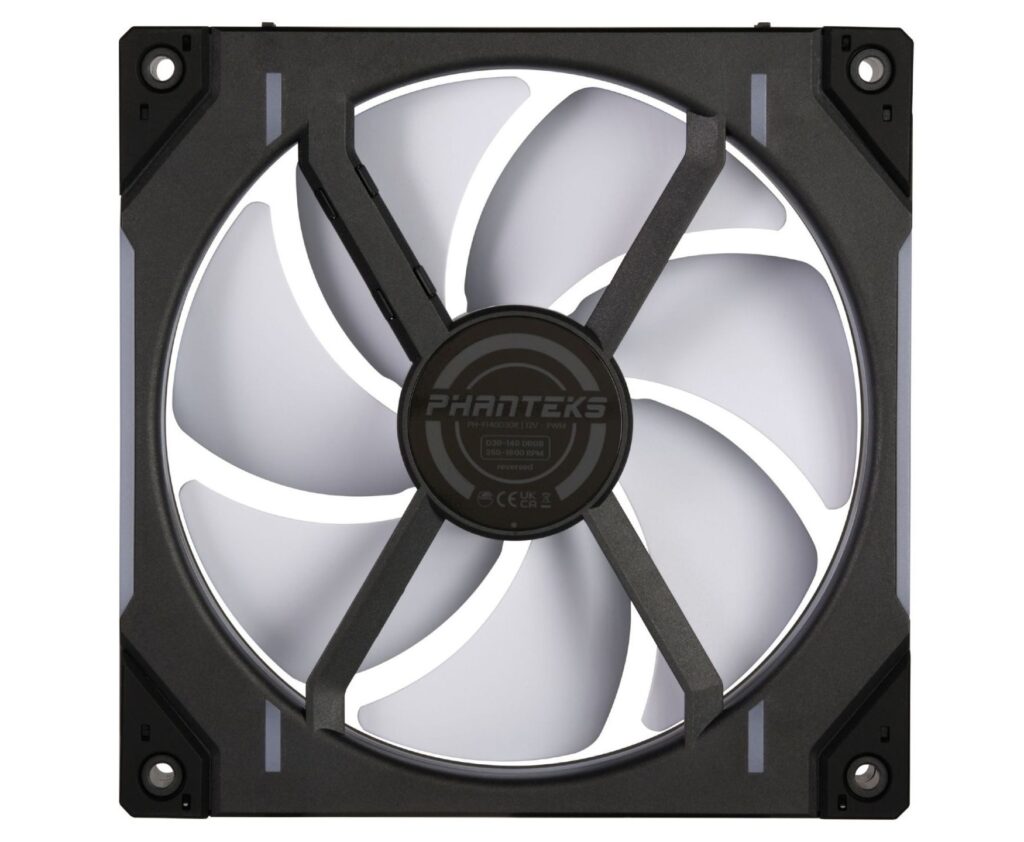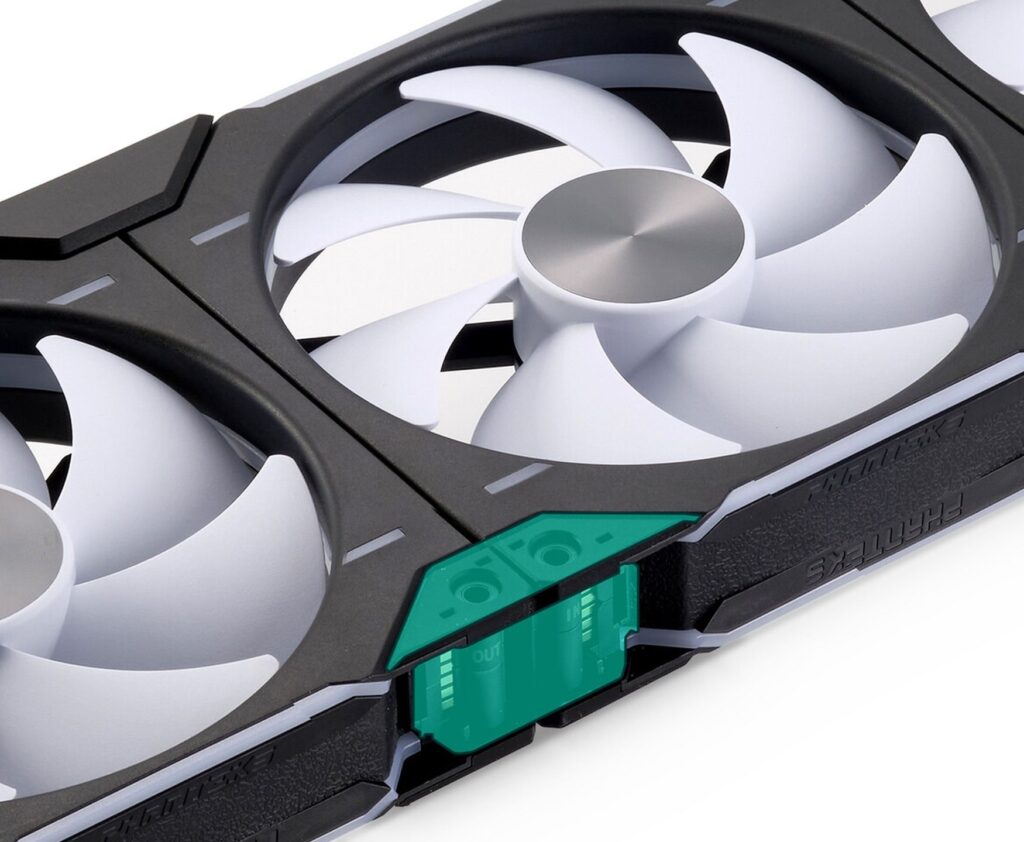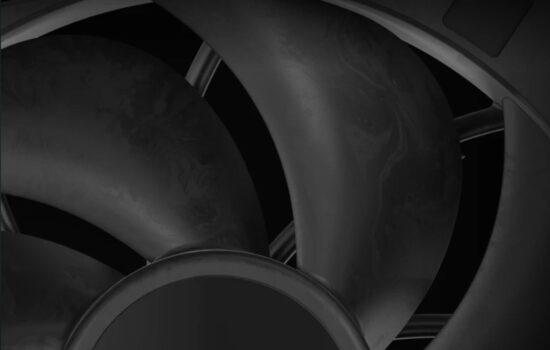Phanteks D30-140
A few 120 mm fans are already thicker than standard, but now there is one which is also one number larger. And it’s being taken up again by the brand that managed to popularize the 30 mm profile the most – Phanteks. The latest D30-140s come in two designs. In addition to the regular variant, there is also a reversed one with the same blades, but incorporated into the frame for the opposite direction of airflow so that it mainly “looks” good.
The D30 fan line has been in the Phanteks lineup for some time, but only in the 120mm format (D30-120), where there is a lot of competition. It’s noticeably less so among the larger, 140mm models, where we’re still waiting for a proper, dominant fan. And maybe one has arrived, at least as far as the ARGB LED segment is concerned, where efficiency is a little less of a consideration than for high-end fans without lighting.
The Phanteks D30, like the T30, are 30mm thick, but the 140mm variants will still have the advantage of a larger cross-section. D30-140 are geometrically based on the T30, the number of blades is the same (7) and their shape is also very similar. However, they are no longer made with LCP, but with a more flexible material, and given that they are quite long, we can expect higher vibrations and consequently eventually more aggressive tonal peaks, but let’s not get ahead of ourselves. These may not be aggressive at all in the operating speed range, and perhaps Phanteks have managed to get around the annoying resonant frequencies, we’ll see in our tests.
These new fans (D30-140) are available in four variants. With both black and white frame (the rotor is always white to guide the light well, as these are lighted fans), there is also a variant with a reversed rotor in addition to the normal one, so that you never see the “unsightly” stator slats from the front with the cable coming from the motor.
The geometry of the blades remains unchanged and the comparable performance characteristics correspond accordingly. The difference in airflow between the variants is only around 0.2% according to the official specifications (122,2 m3/h – regular vs. 121,9 m3/h – reversed), with static pressure it is a bit more, about 7 % (3,32 vs. 3,08 mm H2O). However, the latter is also dependent on the orientation in which the fans were measured. We assume that while for the regular variant the static pressure values refer to a “push” orientation and for the reversed one to a “pull” orientation.
If these fans actually achieve the advertised airflow at this high static pressure, its drop through an obstacle (such as a radiator) will be relatively small and the D30-140 can rank really high in the efficiency rankings.
The reversed variant should always be noisier (32.1 vs. 29.5 dBA) at maximum speed (1800 rpm). This mainly indicates that the stator slats in front of the rotor increase the noise level (by raising a tonal peak at a resonant frequency) more than when they are behind it.
Another key feature is the option to easily daisy chain multiple fans via contacts in the frame. This is a trend that most manufacturers will prospectively jump on to ease installation while promoting a “clean interior” with as few cables as possible.
The D30-140 fans are sold individually, but also as a triple-pack. Regardless of the variant (black/white, regular/reversed), the manufacturer’s suggested retail price for one fan is 30 EUR. With the triple-pack you should save 5 EUR.
English translation and edit by Jozef Dudáš
- Contents
- Phanteks D30-140





